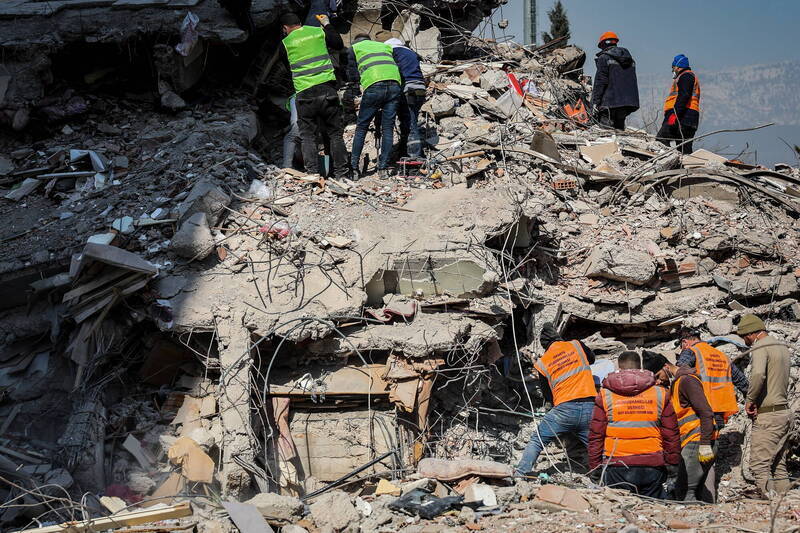A strong earthquake hit Turkey on the 6th of last month, causing serious casualties. The total number of victims in the two countries exceeded 50,000.
(European News Agency)
[Instant News/Comprehensive Report] The border between Turkey and Syria was hit by a magnitude 7.8 earthquake last month, causing serious casualties.
The World Bank (World Bank) pointed out that the estimated direct physical damage in Turkey is as high as US$34.2 billion (approximately NT$1.434 billion), and that of Syria is as high as US$5.1 billion (approximately NT$155.6 billion). Statistics have not yet included economic shocks and losses. Coupled with the continuous emergence of aftershocks, it is estimated that the scale of losses will continue to increase over time.
A strong earthquake hit Turkey on the 6th of last month, causing serious casualties. The total number of victims in the two countries exceeded 50,000. Disasters occurred in 11 provinces of Turkey.
After the main earthquake, there were more than 7,500 large and small aftershocks, causing more houses to shake and collapse, and the disaster situation continued to expand.
Please read on...
The World Bank released statistics at the end of last month, indicating that the scale of direct physical damage caused by the earthquake in Turkey was as high as US$34.2 billion (approximately NT$1.434 billion), of which 53% were direct losses of residential buildings, and non-residential buildings such as Sanitation facilities, schools, public and private sector buildings, etc. accounted for 28%.
Another 19% is infrastructure such as roads, electricity, water supply, etc.
These figures do not include the cost of subsequent reconstruction and recovery, nor do they take into account the broader shocks and losses to the economy, such as disruptions to production and business activity.
In Syria, 4 provinces were hit hard, with about 10 million people living in these places. According to statistics, the direct physical damage in the country was as high as US$5.1 billion (approximately NT$155.6 billion), of which 48% were residential buildings Non-residential buildings accounted for 33.5% of direct losses, and infrastructure accounted for 18%.
Although the statistics include local cultural sites, the World Bank also pointed out that the value of cultural heritage loss is very complex and difficult to quantify, so the damage to cultural heritage has been seriously underestimated.
The World Bank also announced on the 9th of last month an initial aid plan of US$1.78 billion to invest in disaster relief and recovery efforts.
Grasp the pulse of the economy with one hand I subscribe to Free Finance Youtube channel
Already added friends, thank you
Welcome to 【Free Finance】
feel good
Already liked it, thank you.
related news
